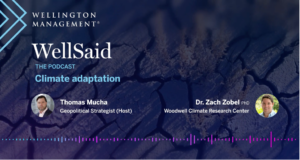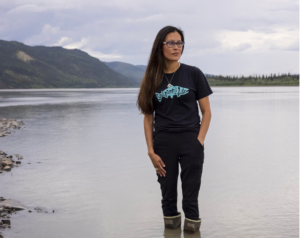Is Earth’s largest heat transfer really shutting down?

With unprecedented heat waves and record-breaking global temperatures, it’s hard to believe that there might be a place on earth that has actually COOLED since the industrial revolution. But, it turns out, there is such a spot. The COLD BLOB off of Greenland mystified scientists for years, but new studies have uncovered a scary reality – this cool patch might be a warning of the impending collapse of a vital earth circulation system. And the consequences would be dire. In this episode of Weathered, we travel to the Gulf Stream with the new PBS Terra show Sharks Unknown to experience the AMOC first hand. And we ask, what is the likelihood that the AMOC will collapse, and what would the consequences be?
How a mix of natural and human-caused factors cooked up Tropical Storm Hilary’s soggy mess

A natural El Nino, human-caused climate change, a stubborn heat dome over the nation’s midsection and other factors cooked up Tropical Storm Hilary’s record-breaking slosh into California and Nevada, scientists figure.
Cooked up is the key phrase, since hot water and hot air were crucial in rapidly growing Hilary and then steering the storm on an unusual path that dumped 10 months of rain in a single weekend in normally bone-dry places. Nearly a foot of rain fell in parts of Southern California’s mountains, while cities smashed summertime records.
Read more on Associated Press News.
Climate adaptation – A conversation with Woodwell Climate Research Center

Wellington Director of Climate Research Chris Goolgasian and Dr. Zach Zobel of Woodwell Climate Research Center join podcast host Thomas Mucha to share their perspectives on the adaptation research and investing landscape.
AI for the planet: How one of the world’s biggest tech firms is backing AI-powered climate science

Last summer, as the COVID-19 pandemic settled into a state of relative control, Google.org turned its attention to an even larger and more complex global emergency: climate change. The corporate philanthropy’s 2022 Impact Challenge on Climate Innovation — the latest in its decade-long series of Impact Challenges on various topics — committed $30 million to
support “big bet” projects that accelerate technological innovation in climate information and action. Google.org would back six projects at up to $5 million each, for up to three years. Projects that make use artificial intelligence technology were encouraged — the effort aims to understand what’s going on in a changing planet and develop tools to help communities adapt to and minimize harmful and disruptive impacts.
Continue reading on Inside Philanthropy.
Salmon Stories | Brooke Woods

“My parents raised their six children at fish camp right above our village of Rampart, on the Yukon River. I have very fond memories of being at camp. Multi-generation family members together harvesting salmon. Family members coming from different villages and cities to come and fish together.
For me that was a sense of peace and community, kinship and well being. Everything was fine and well when we were processing fish together.”
The great flush: Scientists weigh in

Welcome back to our wastewater series, The Great Flush. In this episode, host and producer Gilda Geist interviews three Woods Hole scientists to get to the bottom of the nitrogen problem caused by wastewater on Cape Cod.
Listen on The Upper Cape Catch.
Shaky ground
A company called Indigo is paying farmers to trap carbon in their soils. Some researchers say the climate benefits are dubious
Lance Unger has been doing things a little differently lately on his farm near the Wabash River in southwestern Indiana. After last fall’s harvest, rather than leaving his fields fallow, he sowed some of them with cover crops of oats and sorghum that grew until the winter cold killed them off. And before planting corn and soybeans this spring, Unger drove a machine to shove aside yellowing stalks—last season’s “trash,” as he calls it—rather than tilling the soil and plowing the stalks under.
Google.org awards $5 million for real-time AI permafrost thaw analysis
Woodwell Climate Research Center (formerly the Woods Hole Research Center) in Falmouth, Massachusetts, has announced a $5 million grant from Google.org for the development of open-access satellite data and AI resources to track Arctic permafrost thaw in near real time.
Timely analysis of permafrost thaw, a critical resource to scientists, decision makers, and community members helping to inform climate change mitigation and adaptation strategies, has remained out of reach due to the limitations of current remote sensing and satellite imagery analysis techniques.
Read more on Philanthropy News Digest.



